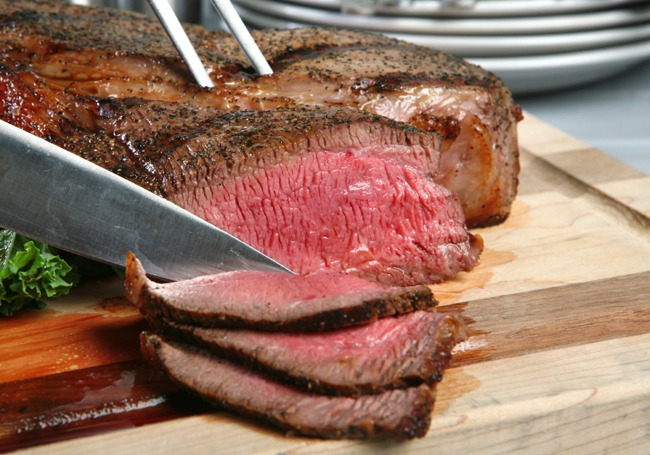If you’re interested in losing fat, the bottom line is to somehow create a negative energy balance.
In other words, energy out must be greater than energy in.
It seems quite simple then that all you’d need to do is to create a caloric deficit by reducing the number of calories eaten per day and all’s well. Science and empirical evidence show that this method may work on the short term, but it’s overall effect is short-lived because you can’t just keep cutting calories infinitely. Caloric reduction alone is also non-selective in its source of weight loss. It’ll result in some fat, a lot of water, and too much precious muscle being lost.
Enter exercise as a viable method of creating a larger caloric deficit. Ask most people what the best methods of exercise may be to promote fat loss and they’ll refer you to aerobic exercise. More often than not, it’ll be lower intensity aerobic exercise like walking, riding a stationary bike, or some other form of contraption you’ll find in gyms of countless rows of machines all facing the TV.
In all honesty, if you were to do anything physical that you’re not used to, even at a low intensity, you’d create a caloric deficit for a while. Then the body accommodates and your low intensity efforts make little or no impact on further fat loss. The answer then is to increase the duration of your activity of choice to expand the caloric deficit of exercise further to keep fat loss moving forward.
You can probably see where this is going. At some point, you’re going to run out of time and your caloric deficit will be insufficient to provide for further fat loss.
This whole process not only terribly inefficient from a time consumption standpoint, but historically speaking it doesn’t work. If it did, there’d be very few people concerned about losing body fat based on the most common, yet unfortunately ineffective recommendations.
Enter the Tremblay Study
Back in the mid 1990’s, the fitness world was still trying to figure out what really is the best method of losing fat. Was it the long slow distance (LSD) or was there something better. The LSD’ers argued that because you’re using a greater percentage of fat as fuel for lower intensity exercise, lower intensity exercise is the key to fat loss.
In contrast, simple observation of the athletes that used an intermittent, higher intensity of effort in their training showed them to be much leaner than those athletes that used other lower intensity methods.
Angelo Tremblay and his co-researchers decided to put both methods to the test in a landmark study to determine which method provided for the greatest amount of fat loss.
The subjects of the study were divided into two groups. One group performed the typical continuous endurance exercise starting at 60% of maximal heart rate and increasing to 85% of maximal heart rate of a 20 week period. The second performed an interval training program consisting of a day of short intervals, 15 to 30 seconds, and a day of longer intervals, 60-90 seconds, over a period of 15 weeks.
At the end of the study, the energy cost of the endurance program was about 120 megajoules (a measure of total energy expended) whereas the interval training program had an energy cost of only about 58 megajoules. So over the entire study the interval training group expended less than half the energy that the endurance trained group expended to complete the program.
The most significant finding, however, was that skinfold measurement (a measure of body fatness) decreases for the interval training group were nine times greater than the endurance training group when expressed on a per megajoule basis.
That means with interval training, you spend less time, expend less energy, and lose more body fat.
Since this study, there have been many others to corroborate these findings.
The question as to why intervals are superior for fat loss may have many influences, however, there’s a great deal of research that shows a significantly greater energy expenditure and fat utilization for energy AFTER the exercise period.
There’s also evidence that high intensity interval training can reduce your appetite compared to lower intensity exercise which favors support of the caloric deficit associated with fat loss eating plans.
Interval Training for Fat Loss
Because our goal is fat loss, there are some general guidelines that need to be followed to perform effective interval training.
Intervals that are too short, 15 seconds or less, will focus on the ATP-CP system which supports activities such as increasing strength, speed, or power. Very little fat loss will be associated with this type of training.
Intervals that are too long, greater than two minutes, will tend to be of insufficient intensity to impact fat loss to maximal benefit although for an aerobic athlete they are essential.
The best balance for fat loss appears to be intervals that last about 30 seconds to 2 minutes.
The recovery interval also plays an important role in impacting fat loss. Too long a recovery interval and average intensity goes down. Too short and workout density is too high and sufficient work can’t be completed.
Based on experience, the best ratios of intense work and recovery appear to be a 1:3 or 1:2. For example, if your work interval is 60 seconds, your recovery interval will be 2-3 minutes. If your work interval is 30 seconds, your recovery interval will be 60 to 90 seconds
Your intensity level for the work interval should be about a 9 on a 10 scale. Recovery intervals should fall in the 4-6/10 range for most people.
Getting Started with Fat Loss Intervals
If you’ve never done interval training before, I don’t recommend that you dive right into them at maximal intensity. This type of training is associated with high levels of lactate accumulation and increased acidity of the bloodstream which makes them less comfortable than the typical LSD form of training. The increased acidity can also result in intense nausea and lowered blood pressure.
This can be avoided by increasing the intensity of your intervals over a period of weeks.
For instance, instead of jumping right to your 9/10 intensity, you’ll benefit from varying your intervals from a work interval of 6-7/10 to a recovery interval of 4-5/10. As you accommodate to this level of intensity, progressively increase the intensity of your work intervals.
Start with 3-5 “repeats” (1 repeat = one work interval + one recovery interval) 1-2 times per week and increase the number of repeats and your frequency based on your tolerance and needs. Be sure to include a warm-up and cool-down on each end of your interval training sessions.





